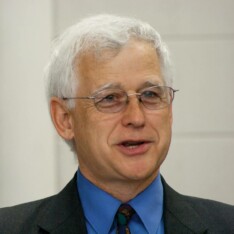The Origin of SARS-CoV-2

Since March 2020, the world has reeled from the Covid-19 pandemic caused by the SARS-CoV-2 virus. According to Johns Hopkins University & Medicine, there have been 177 million known cases and 3.8 million deaths worldwide.
Covid-19 touches much more than just the medical world. It and responses to it have devastated economies around the world. But it also raised issues of free inquiry, truth, and trust. Have people in positions of power lied to us? Have they put us at undue risk?
Did the coronavirus come from nature or from a lab experiment? The answer to that question suggests the best responses for individuals and governments to take to prevent a recurrence. If we are to have any hope of successfully preventing massive deaths and economic chaos in the future, we must understand the virus’s origin.
Two Theories
The two primary theories of the origin of SARS-CoV-2 are natural transmission from animals to humans, also called zoonotic transmission, and manipulation in a virus laboratory, most likely the Wuhan Institute of Virology, or WIV. Both theories have merit; neither has been proven or disproven.
With every “crime” scene, evidence can be found. Someone saw or heard something suspicious. There are notes, data, emails, footprints, fingerprints, and DNA evidence. A dog barked. Or a dog that should have barked didn’t.
Viruses
Viruses exist in a nebulous realm between living and inanimate. They are essentially genetic code that attaches to the cells of living beings, enters those cells, hijacks the cells’ internal functions to produce more copies of themselves, and then exits the cells in such a way as to infect other organisms. A virus that is good at infecting, say, a bat, will probably not be good at infecting a human because we differ from bats. Viruses do move from bats to humans, but the process is typically slow and usually requires an intermediate species much closer biologically to humans.
SARS-CoV-2 is one of seven coronaviruses known to infect humans. SARS-CoV-1, MERS-CoV and SARS-CoV-2 are the more dangerous members of the family, while HKU1, NL63, OC43 and 229E are milder.[1] You’ve likely been infected with the milder coronaviruses many times. Coronaviruses are part of the 58-member sarbecovirus subgenus family and sarbecoviruses are part of a larger betacoronavirus genus family.
The MERS-CoV virus transferred from bats to humans via camels and the natural path of the virus was discovered in nine months. The SARS-CoV-1 virus used civets—a cat-like animal—as the intermediary and the source was discovered in four months. When such species hopping takes place, plenty of evidence is left behind. There is a reservoir of virus in the original species, a closely related but slightly different reservoir in the intermediate species, and evidence in human medical records and blood and tissue samples that the virus entered humans multiple times until it became contagious enough to transmit widely between humans.
Viruses change by two primary mechanisms. When they enter a host, because such a large number of copies are made, some errors, or mutations, may be introduced. Most of these mutations make the virus less viable. A rare mutation makes the virus better suited and, through a survival-of-the-fittest process, the more capable virus takes over. Mutations happen at a relatively stable rate, meaning that scientists can estimate how long a virus took to transition from one form to another.
The second way that viruses change is by having two viruses from the same family infect a host simultaneously and swap genetic information. Imagine, to use an analogy, that a blond, blue-eyed virus and a dark-haired, brown-eyed virus infect a camel cell simultaneously. It is possible that the emerging virus could have dark hair and blue eyes. This is a much faster way for a virus to change, but the host must be simultaneously infected with two viruses of the same family and the resulting virus must be viable. The simultaneity requirement lowers the probability of occurrence and, if blue eyes didn’t exist anywhere within the family, the resulting virus can’t have blue eyes.
This explication casts doubts on the zoonotic (natural) theory. No reservoirs of similar viruses have been found in bats and intermediate hosts. The viruses identified in bats in caves in China are not genetically close enough to have changed via mutations within any reasonable amount of time to have infected humans directly. What about the possibility of the genetic transfer of key components from another virus within the same family? To answer that question, we need to introduce the ACE2 receptor.
Human ACE2 Receptor
SARS-CoV-2 has a very unusual feature: it is surprisingly good at infecting a particular type of cell that has what is known as an angiotensin-converting enzyme 2 receptor. Some other animals have ACE2 receptors, but SARS-CoV-2 works much better in human or human-like ACE2 receptors. The significance of this cannot be overemphasized.
SARS-CoV-2 needs four things to happen to infect a human. It must enter the body and it must attach to certain cells. It must be cleaved at precisely the correct spot by the victim’s cells. The remaining genetic piece must then enter and infect the cell. Every one of these four steps has a low probability of occurring by chance. The probability of all four of these unlikely events developing randomly through mutations is, therefore, very low.
Could SARS-CoV-2 have acquired its clever attributes from another coronavirus of the same family? Are there coronaviruses that exploit human-like ACE2 receptors? For this, we need to discuss the furin cleavage site, which is where the ACE2 receptor precisely cuts SARS-CoV-2, as described in step 3 above.
Furin Cleavage Site
Scientists Yiran Wu and Suwen Zhao published a paper claiming that other coronaviruses have the unusual feature of SARS-CoV-2, called a furin cleavage site. They state that “furin cleavage sites are common in betacoronavirus.”[2] However, others see it differently. Rossana Segreto and Yuri Deigin state that SARS-CoV-2 has “the presence of a furin cleavage site missing in other CoVs [coronaviruses] of the same group.”[3] More specifically, there are other bat coronaviruses with the furin cleavage site, but they are geographically distant from Wuhan and they come from another subgenus family, so they can’t have combined to produce SARS-CoV-2.
We know that SARS-CoV-2 does exploit human-like ACE2 receptors. If that ability wasn’t developed via mutations or from borrowing genetics from a family member, where could it have gotten it? Scientists engineering viruses in labs prefer to use human cell cultures and humanized laboratory mice, which are mice that have been genetically engineered to have human-like ACE2 receptors. Viruses developed in labs are designed to exploit human-like ACE2 receptors.
CGG-CGG
Here’s where we find another curious piece of evidence. “Since 1992 the virology community has known that the one sure way to make a virus deadlier is to give it a furin cleavage site at the S1/S2 junction in the laboratory.”[4] When scientists in a lab want to create a particular gene sequence for a furin cleavage site in a virus, they invariably use the following sequence of amino acids: CGG-CGG. There are 58 known viruses in the sarbecovirus subgenus family and between them there are 580,000 such six-letter sequences. However, only one of the 58, SARS-CoV-2, has the CGG-CGG sequence.[5] In other words, it is what we would expect to find in a virus created in a laboratory but not one coming from nature. In the blue-eyes analogy, we can’t find blue eyes anywhere in this family. Note that the statement about CGG-CGG being rare is disputed by Kristian G. Andersen, who is quoted in more detail below.
Early Cases
Consider how viral diseases typically start. With MERS-CoV, a virus moved from bats to an intermediate species of camels. Then, over time, the virus moved from camels to humans. This doesn’t happen in one great leap. Usually, one camel infects one person and that person either recovers or dies. Then another camel infects another person who recovers or dies. Only after repeated attempts does the virus change enough to successfully become transmissible between humans. Diseases that move from camels into humans and then stop aren’t a big threat. It is only after a disease learns to move from one human to another that the threat becomes real.
And yet for forensic scientists, this process leaves a rich trail of evidence. The camels probably still host a closely related virus and some people show evidence of the early form of the pre-epidemic disease, whether in the form of written disease descriptions, hospital records, tissue samples, or blood samples.
In the case of Covid-19, while the Chinese government has tested 80,000 wild and domesticated animals (none tested positive), it has destroyed and withheld much of the key data. This is curious because if evidence of pre-epidemic cases could be found, it would help establish the zoonotic theory and exonerate the Wuhan lab.
Location, Location, Location
If camels infected humans in the Middle East, we wouldn’t expect to see the first cluster of cases in, say, Honolulu. Early cases typically happen where the virus first became contagious. And even if people travel, they are likely to become sick or infect others en route, leaving a trail of evidence.
There are nine Metro lines and 40 hospitals in Wuhan and yet all the patients treated for Covid-19 between 1 December 2019 and early January 2020 were cared for in hospitals close to the Metro Line 2 commuter line, connecting Wuhan and WIV. That’s highly unlikely by random chance alone.
Mutations Along the Way
In the camel example above, because the virus was relatively optimized for camels but then took up residence in humans, the virus needed time to optimize itself for humans. Scientists can typically see evidence of the mutations needed to make this change. It’s as if the virus were testing different recipes to see which one worked best.
With SARS-CoV-2, we don’t see this sort of evidence, making it appear as if the virus came designed to successfully infect humans, with no experimentation needed. “It appeared in humans already adapted into an extremely contagious version. No serious viral ‘improvement’ took place until a minor variation occurred many months later in England.”[6]
“With CoV-2 [SARS-CoV-2], every one of the more than 294,000 virus genomes sequenced can be traced back to the first genomic cluster and in the first patient in that cluster, a 39-year-old man who was seen at the People’s Liberation Army (PLA) Hospital about one mile from the Wuhan Institute of Virology.”[7]
Denouncing the Lab Leak Theory
Covid-19 raises important considerations about truth and trust. While the genesis of Covid-19 is still shrouded in mystery, a lack of certainty didn’t stop prominent people and organizations from stating at an early date that any suggestion that SARS-CoV-2 was manipulated in a lab was not true,[8] misinformation,[9] a conjecture,[10] a conspiracy,[11] [12] false information,[13] implausible,[14] something out of a comic book,[15] extremely unlikely,[16] or already debunked,[17] and had been repeatedly disproven.[18]
Why were these people so dismissive of the lab leak theory? Were their statements based on a reasoned assessment of the data or the desire to steer public opinion toward a favored conclusion?
Some who made these claims, such as Anthony Fauci, have since backtracked and admitted that the lab leak theory has merit. Further, we now know that other prominent denouncers had privately presented evidence supporting the lab leak theory or had serious conflicts of interest due to their work with the Chinese lab in question.
Kristian G. Andersen of Scripps Research Institute, in an influential letter published in Nature Medicine in April 2020, called the lab leak theory implausible. The paper concluded: “Our analyses clearly show that SARS-CoV-2 is not a laboratory construct or a purposefully manipulated virus.”[19] Yet just a couple of months earlier, Andersen had emailed Fauci to report that the virus had “unusual features” that looked “potentially engineered.” He explained that he and his team “all find the genome inconsistent with expectations from evolutionary theory.” Translation: the virus appears to have been manipulated in a lab. Why the change of heart? Andersen never explained. Nor did he allow that the lab leak theory deserved further exploration and debate.
Another person who dismissed the lab leak theory, Peter Daszak, of EcoHealth Alliance, has a serious conflict of interest: he has worked closely with Zhengli Shi, the key coronavirus scientist at WIV. Daszak was a prominent member of the WHO task force that concluded that the virus had natural origins. Not everyone at the World Health Organization was convinced: WHO Director-General Tedros Adhanom Ghebreyesus, for instance, called for further studies.
Not even Fauci is conflict free. His agency, the National Institute of Allergy and Infectious Diseases, helped fund Shi’s experiments at WIV. Shi acknowledged Fauci’s support in some of her published papers.
Supporting the Lab Leak Theory
Prominent scientists have called for more research into the lab leak theory[20] while others, including Nobel laureate and former president of Caltech, David Baltimore, and former CDC Director and virologist, Robert Redfield, have suggested that the virus shows signs of laboratory manipulation. Baltimore said the virus had “unusual features” that were “a powerful challenge to the idea of a natural origin.”
Governments Develop and Store Dangerous Bioweapons
Shortly after the 9/11 terrorist attacks in 2001, anthrax packages were mailed to various Americans, killing five and sickening another seventeen. The culprit was never positively identified, but the anthrax used was recognized as the Ames strain, developed and stored by the U.S. Army. Whether the Army was directly involved in mailing the dangerous packages is not known, but one can reasonably ask why the Army was developing and storing such exotic and highly virulent strains of anthrax.[21] U.S. government officials deny engaging in offensive bioweapons research but acknowledge such research in defensive bioweapons. As with nuclear weapons, the distinction is of dubious significance.
Summary of Zoonosis Theory
While any individual virus’s structure is extremely unlikely to happen by chance, nature finds a way to create viruses that do their job. With an astronomical number of shots on goal, the odds are good that one or more pucks will find the back of the net. History proves this time after time. SARS-CoV-2 has not been found in nature, but our knowledge of the viruses that live in the wild is limited. For instance, a natural source of the Ebola virus has never been identified.
Summary of Lab Leak Theory
We know that the WIV laboratory in Wuhan was working on viruses similar to SARS-CoV-2. We know that scientists raised concerns about the security of the lab. We know that a leak of the SARS-CoV-1 virus from a lab in Beijing in 2004 infected nine people before it was contained. We know that labs have been working on “gain of function” experiments with the goal of making viruses more contagious and virulent for humans. The SARS-CoV-2 structure looks like what we would expect to come out of a lab trying to make viruses more virulent in humans. The pandemic started in Wuhan, at hospitals near the main commuter line between Wuhan and WIV. Even after many months and much exploration, no species with a host virus similar to SARS-CoV-2 has been found. Some of the prominent people who strongly denied the possibility of a lab leak had relationships with WIV or noted characteristics of the virus that looked engineered. The Chinese government, which has much to gain by identifying the natural source of this virus, has destroyed evidence, prevented and delayed investigations, deflected criticism, blamed others, and generally acted suspiciously. In a move suggestive of a serious discovery, the WIV research facility was put under the control of Chen Wei, a Major General of the People’s Liberation Army, in January 2020.[22] Further, Wei and six of her colleagues were photographed being administered Covid-19 vaccines on 3 March 2020, nine months before the FDA gave Pfizer’s vaccine an emergency use authorization in this country.[23]
Upon first hearing about Covid-19 cases, WIV researcher Zhengli Shi stated that she wondered whether the virus came from her lab: “Could they [coronaviruses causing infections in Wuhan] have come from our lab?”[24] The next thing she did was to alter the databases on the WIV website to make it more difficult to discover what work was being performed at WIV.
Unattributed U.S. government intelligence reports that several researchers inside the WIV became sick in the autumn of 2019, before the first identified case of the outbreak. An anonymous person familiar with the report said, “The information that we had coming from the various sources was of exquisite quality. It was very precise. What it didn’t tell you was exactly why they got sick.”[25] This raises questions about the credibility of Shi’s claim that there was “zero infection” among the WIV’s staff and students. Even if the virus didn’t originate in the lab, it is likely that some staff and students would have contracted it in the community.
Conclusion
According to Xiao Qiang, a research scientist at Berkeley: “To understand exactly how this virus has originated is critical knowledge for preventing this from happening in the future.”[26] Based on what we know, the lab leak theory better fits the evidence. Even if this particular virus didn’t escape from a lab, government-funded bioweapon experiments are playing with fire and the next time a dangerous virus escapes, which will eventually happen, we may not be so “lucky” as to escape with four million dead.
[1] Kristian G. Andersen et al, “The proximal origin of SARS-CoV-2,” Nature Medicine, April 2020.
[2] Yiran Wu and Suwen Zhao, “Furin cleavage sites naturally occur in coronaviruses,” Stem Cell Research, 2021. https://doi.org/10.1016/j.scr.2020.102115
[3] Rossana Segreto and Yuri Deigin, “The genetic structure of SARS-CoV-2 does not rule out a
laboratory origin,” BioEssays, 2020. https://doi.org/10.1002/bies.202000240.
[4] Steven C. Quay, “Bayesian Analysis of SARS-CoV-2 Origin,” 29 March 2021.
[5] Steven C. Quay, “Bayesian Analysis of SARS-CoV-2 Origin,” 29 March 2021.
[6] Steven Quay and Richard Muller, “The Science Suggests a Wuhan Lab Leak,” The Wall Street Journal, 6 June 2021.
[7] Steven C. Quay, “Bayesian Analysis of SARS-CoV-2 Origin,” 29 March 2021.
[8] Anthony Fauci, director of the National Institute of Allergy and Infectious Diseases
[9] Peter Daszak et al, “Statement in support of the scientists, public health professionals, and medical professionals of China combatting Covid-19,” The Lancet, 7 March 2020.
[10] Peter Daszak et al, “Statement in support of the scientists, public health professionals, and medical professionals of China combatting Covid-19,” The Lancet, 7 March 2020.
[11] Yiran Wu and Suwen Zhao, “Furin cleavage sites naturally occur in coronaviruses,” Stem Cell Research, 2021. https://doi.org/10.1016/j.scr.2020.102115
[12] Peter Daszak et al, “Statement in support of the scientists, public health professionals, and medical professionals of China combatting Covid-19,” The Lancet, 7 March 2020.
[13] Facebook and Google
[14] Kristian G. Andersen et al, “The proximal origin of SARS-CoV-2,” Nature Medicine, April 2020.
[15] Maggie Fox, “Lab leak Covid-19 theory is like something out of a comic book, virologist says,” CNN, 31 March 2021.
[16] World Health Organization (WHO) report on origin of SARS-CoV-2
[17] Washington Post, February 2020.
[18] Facebook and Google
[19] Kristian G. Andersen et al, “The proximal origin of SARS-CoV-2,” Nature Medicine, April 2020.
[20] Jesse D. Bloom et al, “Investigate the origins of Covid-19,” Science, 14 May 2021.
[21] PBS Frontline, 2011.
[22] Abhinandan Mishra, “PLA-controlled Wuhan lab under fresh scanner,” The Sunday Guardian, 15 May 2021.
[23] Abhinandan Mishra, “PLA-controlled Wuhan lab under fresh scanner,” The Sunday Guardian, 15 May 2021.
[24] Jane Qiu, “Chasing Plagues,” Scientific American, June 2020.
[25] Michael R. Gordon et al, “Intelligence on Sick Staff at Wuhan Lab Fuels Debate on Covid-19 Origin,” The Wall Street Journal, 23 May 2021.
[26] Rossana Segreto and Yuri Deigin, “The genetic structure of SARS-CoV-2 does not rule out a laboratory origin,” BioEssays, 2020. https://doi.org/10.1002/bies.202000240.












